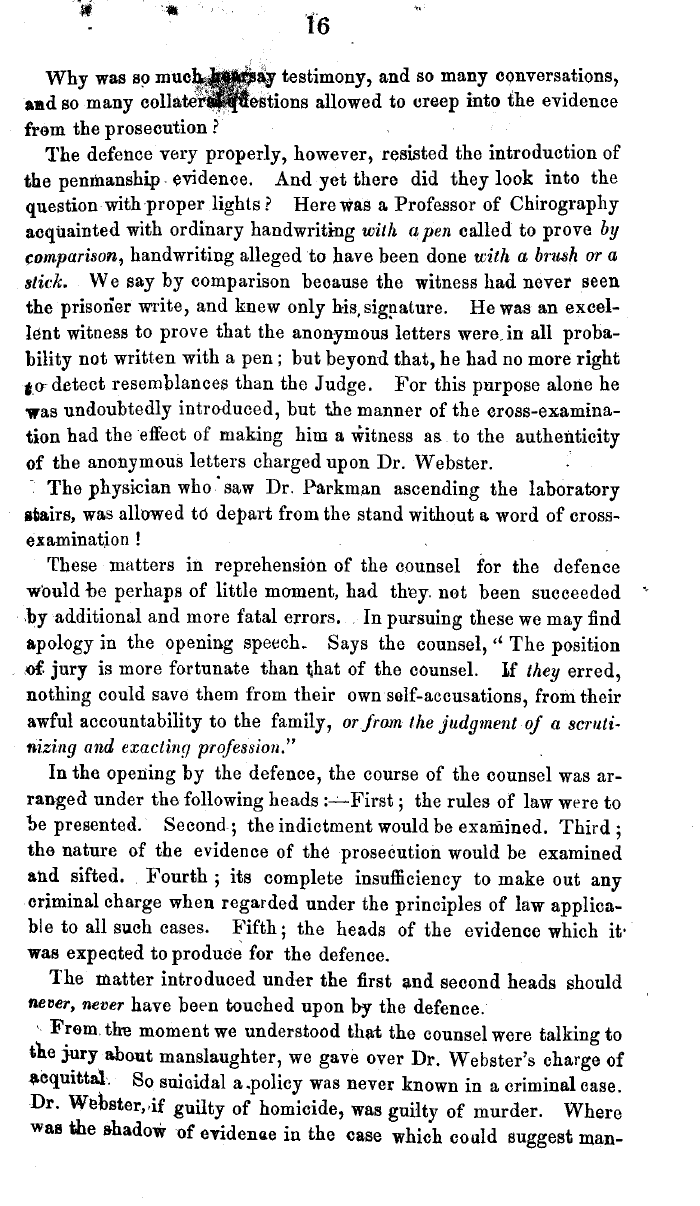|
Why was so muc e' ay testimony, and so many conversations,
and so many collatei~ estions allowed to creep into the evidence
from the prosecution ?
The defence very properly, however, resisted the introduction of
the penmanship. evidence. And yet there did they look into the
question with proper lights ? Here Was a Professor of Chirography
acquainted with ordinary handwriting with a pen called to prove by
comparison, handwriting alleged to have been done with a brush or a
stick. We say by comparison because the witness had never seen
the prisoner write, and knew only his, signature. He was an excel-
lent witness to prove that the anonymous letters were.in all proba-
bility not written with a pen; but beyond that, he had no more right
to, detect resemblances than the Judge. For this purpose alone he
was undoubtedly introduced, but the manner of the cross-examina-
tion had the effect of making him a witness as to the authenticity
of the anonymous letters charged upon Dr. Webster. .
The physician who ' saw Dr. Parkman ascending the laboratory
stairs, was allowed t6 depart from the stand without a word of cross-
e&amination !
These matters in reprehension of the counsel for the defence
would be perhaps of little moment, had they. not been succeeded
by additional and more fatal errors. . In pursuing these we may find
apology in the opening speech- Says the counsel, °` The position
oŁ jury is more fortunate than that of the counsel. If they erred,
nothing could save them from their own solf-accusations, from their
awful accountability to the family, or from the judgment of a 3cruti-
nizi.ng and exacting profession."
In the opening by the defence, the course of the counsel was ar-
ranged under the following heads :-=-.First ; the rules of law were to
be presented. Second-; the indictment would be examined. Third ;
the nature of the evidence of the prosecution would be examined
and sifted. Fourth ; its complete insufficiency to make out any
criminal charge when regarded under the principles of law applica-
ble to all such cases. Fifth; the heads of the evidence which it-
was expected to produce for the defence.
The matter introduced under the first and second heads should
never, never have been touched upon by the defence.
1 From, the moment we understood that the counsel were talking to
the jury about manslaughter, we gave over Dr. Webster's charge of
acquittal. So suicidal a.policy was never known in a criminal case.
Dr. Webster,~if guilty of homicide, was guilty of murder. Where
was the shadow -of evidenge in the case which could suggest man-
|

